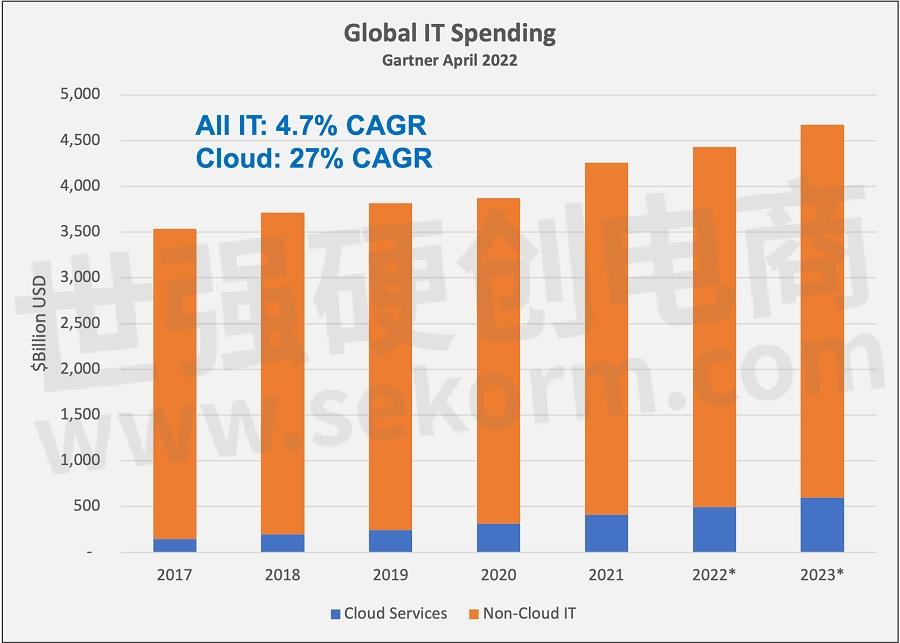Renesas‘ s executive Blog: Digital Power Sets the Direction for Data Center Growth in the AI Era

Data center power requirements are often in the news given the insatiable need for artificial intelligence, 5G wireless networks, and the Internet of Things to process rapidly rising data volumes.
With the cloud storage market expanding at an estimated 20-plus percent annually, the world’s largest hyper-scale computing companies are taking advantage of this growth to offer their customers a variety of data storage models. These include managing on-premise servers, storage, and backup infrastructure to a hybrid model where Amazon, Google, or Microsoft offloads and stores some data – and increasingly to a framework where customers outsource virtually all of their data management functions. In effect, the cloud storage industry is evolving from a capital-intensive paradigm where the customer owns the data center and its contents to one governed by operational expenses in the form of monthly or annual service fees.

Data complexity is responsible for a large part of this shift in data storage economics as the AI algorithms that are changing how we engage with the world around us must be trained using enormous quantities of text, audio, and video content. This is driving huge benefits for the largest cloud service providers, which all require advanced electronics to keep ahead of the power demand curve. And this is happening as suppliers such as Intel, AMD and Nvidia are driving deeper into the server market by cranking up processing horsepower, which is further taxing power and thermal management budgets.
Imagine the challenge created by managing the power requirements of a data center with hundreds of servers, each of which may have thousands of multi-core processors that draw hundreds of amps per core and must be turned on and off in a matter of nanoseconds. All of that means the corresponding power solutions have to be agile, versatile, and scalable. And that is creating a perfect storm for Renesas Electronics where over the past 10 years we have built and refined highly efficient digital power technologies.
The beauty of digital power lies is in the control loops that enable us to configure the power chain in the digital domain. This configurability allows data center designers to use one standard architecture to manage the power demands of many different types of processors, from x86 CPUs and TensorFlow GPUs to SoCs and FPGAs. In short, we can scale to match the size and power needs of different processors with essentially the same piece of silicon.
The other advantage of digital power is on the telemetry side, where we monitor and collect real-time data that allows data center operators to use Renesa's power systems as a proxy to more efficiently manage and optimize processor usage. The bottom line is that digital power gives customers the ability to change things quickly or drop in a firmware patch in a way that is not supported by conventional power electronics.
Renesa's digital power chain portfolio is so robust because we are one of the only companies able to design and manufacture highly-efficient MOSFETs, smart drivers, and controllers that manage each power conversion stage – effectively an end-to-end digital power solution. That flexibility also allows Renesa's customers to more quickly address changing market and design dynamics because they know they don’t need to change their power design to conform to the new system architecture.
Over the past decade, Renesa's digital power team has grown from 20 people to more than 100. This helps explain why Renesas has moved from a position five years ago when we held less than a five percent share of total available data center power revenue to what I project will be 25 percent or more in 2023.
To recap, the megatrends that data center operators are grappling with demand faster processors that invariably are contributing to increased server power demand. By providing a highly-efficient, configurable power solution, Renesas is helping customers support many different processor types with the flexibility to future-proof data center infrastructure and better support the AI era.
- +1 Like
- Add to Favorites
Recommend
- Cmsemicon Newly Launches 32-bit Industrial-Grade MCU BAT32G439 Series Operating at a Frequency of 128MHz
- Renesas Partners with EdgeCortix to Streamline AI/ML Development, Providing the Ability to Leverage Its Existing IP and Hardware
- The World‘s First Dual-Core Real-Time Control MCU Featuring Cortex-M52 Processor Unveiled at Electronica China 2024
- Solving Challenges Through the Fusion of Analog and Digital, New Options for Power Supply Control ICs in the Low to Medium Power Range-LogiCoA™ Power Supply Solution
- Renesas Releases 2nd Generation Digital Multiphase Controllers and Smart Power Stages for IoT Infrastructure Systems
- Kyocera and Digital Grid Begin Joint Demonstration of Renewable Peer-to-Peer Power
- Energous wireless power solutionst: Enabling Digital Twins Across Industries
- Renesas DSP Solution on Renesas Lab on the Cloud, Input Analog Signals Directly From A Signal Generator To The Rx231 Microcontroller Evaluation Board
This document is provided by Sekorm Platform for VIP exclusive service. The copyright is owned by Sekorm. Without authorization, any medias, websites or individual are not allowed to reprint. When authorizing the reprint, the link of www.sekorm.com must be indicated.






























































































































































































































































































































































































































































































































































































































































































































































































































































































